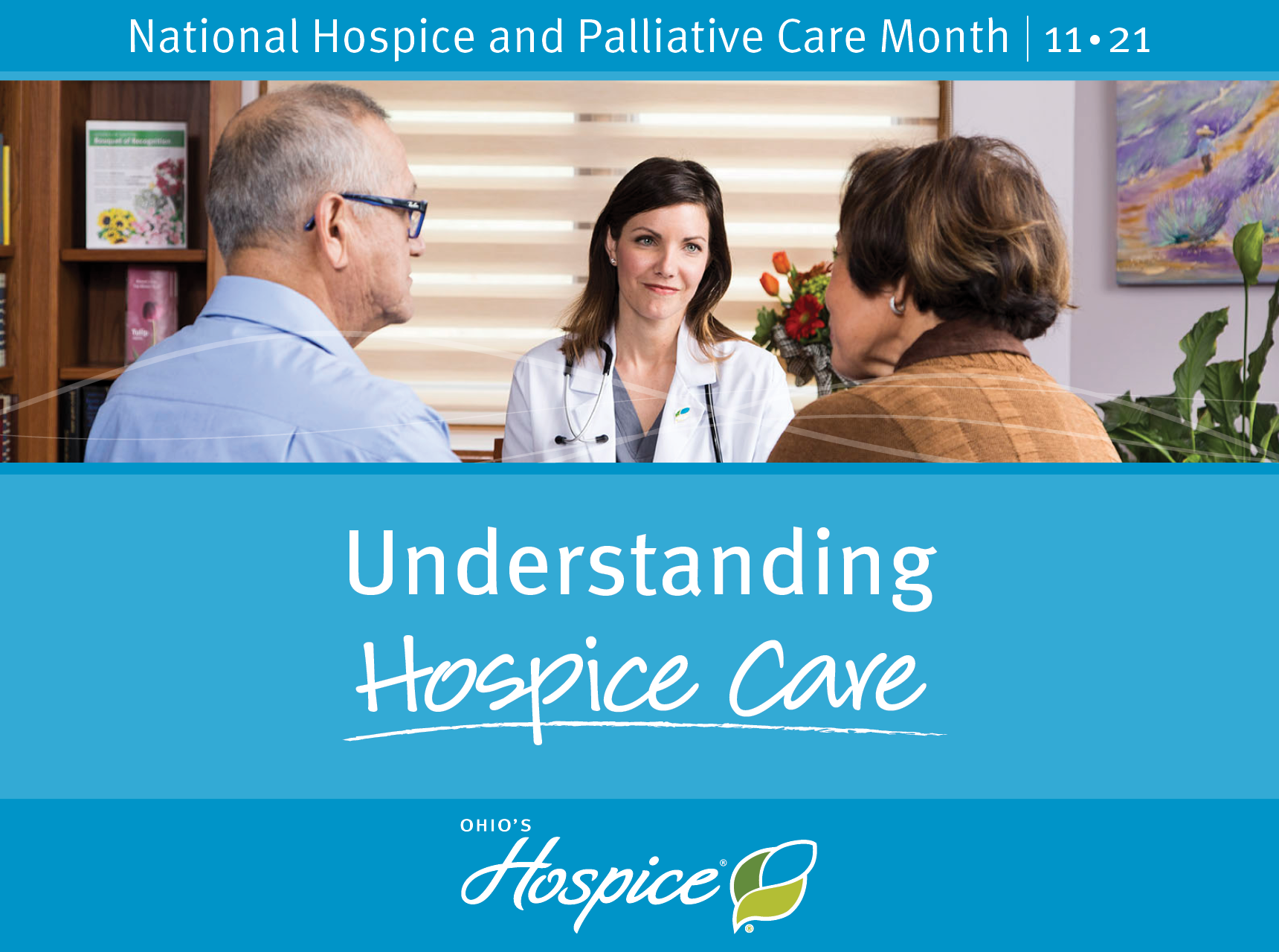
National Hospice and Palliative Care Month 2021: Understanding Hospice Care
During the month of November 2021, Ohio’s Hospice is observing National Hospice and Palliative Care Month. This article focuses on understanding hospice care.
In 1967, Dame Cicely Saunders, MD, saw a need in the medical community for end-of-life care that approached death and dying with dignity and respect for patients. Saunders’ vision for hospice care focused on compassionate end-of-life care that was patient-centered, whole-person care backed by strong communication between patients and physicians, education for staff and providers, and evidence-based research.
“You matter because of who you are,” she is quoted as saying. “You matter to the last moment of your life, and we will do all we can, not only to help you die peacefully, but also to live until you die.”
Ohio’s Hospice follows Saunders’ model to offer patients and families medical care, pain management, and emotional and spiritual support through the end of life. Interdisciplinary care teams at Ohio’s Hospice are designed to address the specific needs of every patient and family.
What does hospice mean?
Hospice is a model of medical care that focuses on the quality of life for patients experiencing an advanced, life-limiting illness or injury. Through hospice care, patients receive compassionate care through the end of life so they may live comfortably. Hospice care treats the person and symptoms of the disease, rather than treating the disease itself and looking for a cure. Symptoms are managed and pain is controlled so a patient’s last days can be spent with dignity and quality, surrounded by loved ones.
Hospice patients benefit from a team of caregivers who help the patient choose the care they want. Family members are often involved in patient care and decision-making. The hospice team supports patients and their families, so the patient’s choices are honored.
Care from Ohio’s Hospice includes four levels:
- Routine Care – Patients receive hospice services wherever they call home.
- Crisis Care – Patients receive care on a short-term, continuous basis to monitor and manage uncontrolled symptoms.
- General Inpatient Care – Patients receive care on a short-term basis in an inpatient unit facility to help relieve uncontrolled symptoms.
- Respite Care – Patients receive care in an inpatient unit facility on a short-term basis, up to five days, to provide relief for the caregiver before returning to their home.
How is hospice different from palliative care?
While hospice and palliative care both provide better quality of life and symptom relief, they are different.
- Hospice care is offered to patients during the last phase of an incurable illness or near the end of life. It is provided when there is no active or curative treatment being given.
- Palliative care can be offered at any stage of a serious illness. It can be provided while the patient receives illness treatment, such as chemotherapy or immunotherapy.
When should I look for hospice care?
Deciding when it is time for hospice can be difficult and should be discussed between patients, doctors and family members. Generally, it is time for hospice care when:
- A patient is expected to live six months or less, according to a physician.
- A patient is declining rapidly despite treatment. This could include weight loss, mental status decline, or inability to perform daily living activities.
- A patient is ready to live more comfortably and forego treatments aimed at prolonging life.
How do I pay for hospice care?
Under the Medicare or Medicaid Hospice Benefit and through most private insurances, the services, medications, supplies and equipment related to a patient’s illness are covered, resulting in little to no cost to the patient for hospice care.
Ohio’s Hospice and its affiliates provide care regardless of a patient’s ability to pay. Patients benefit from an array of complementary and innovative therapies.
How do I find a hospice organization near me?
Across the state of Ohio, Ohio’s Hospice affiliates provide care in 44 counties. For more information, contact your local affiliate.

